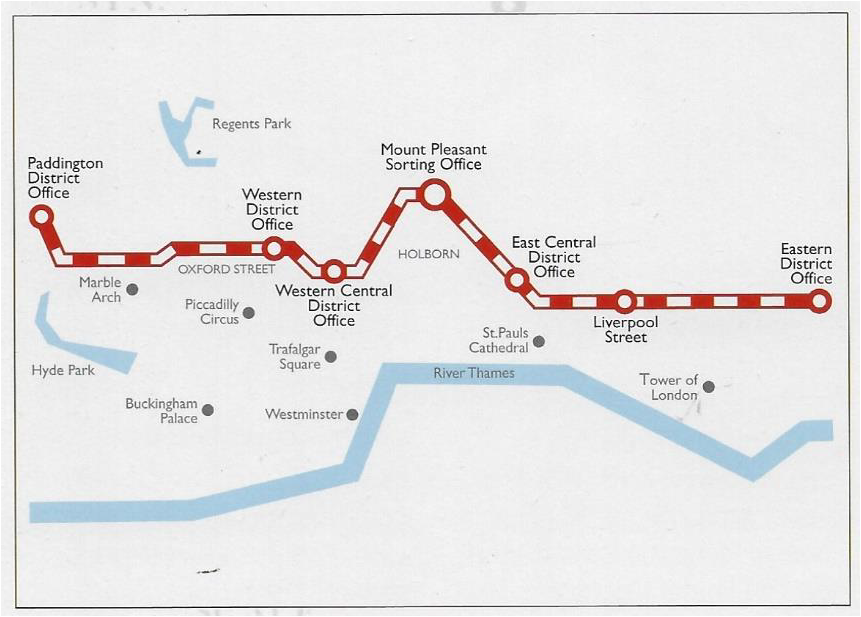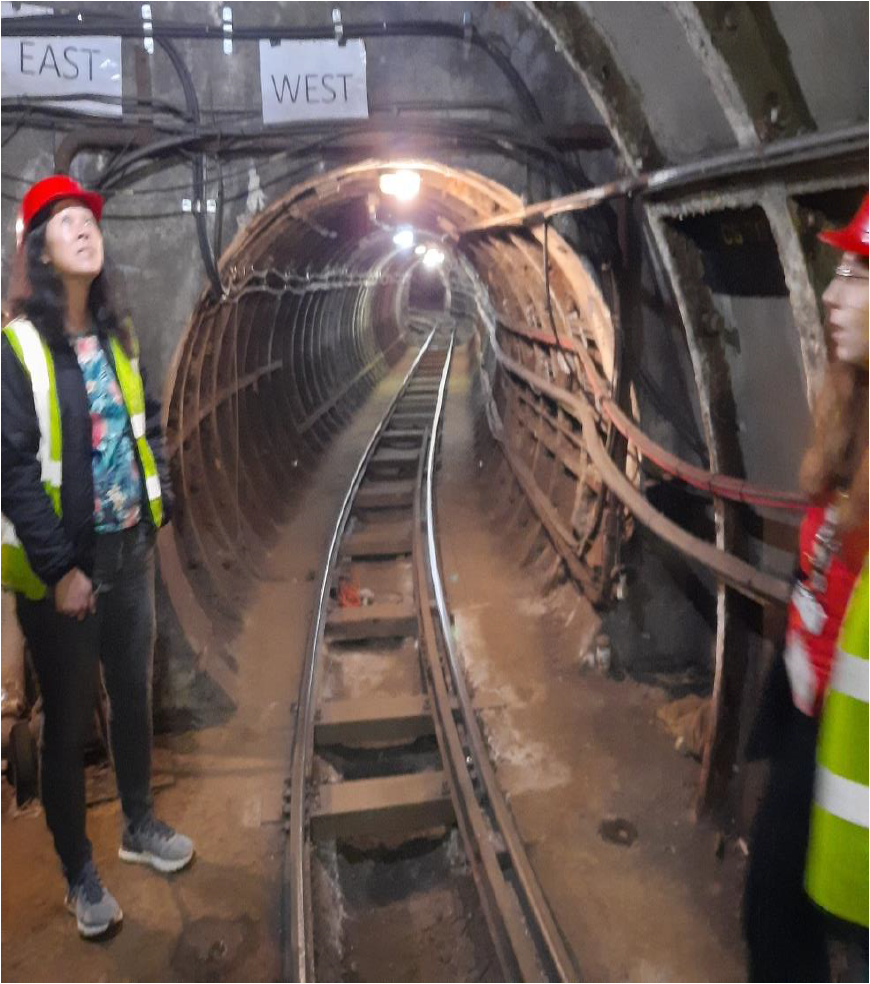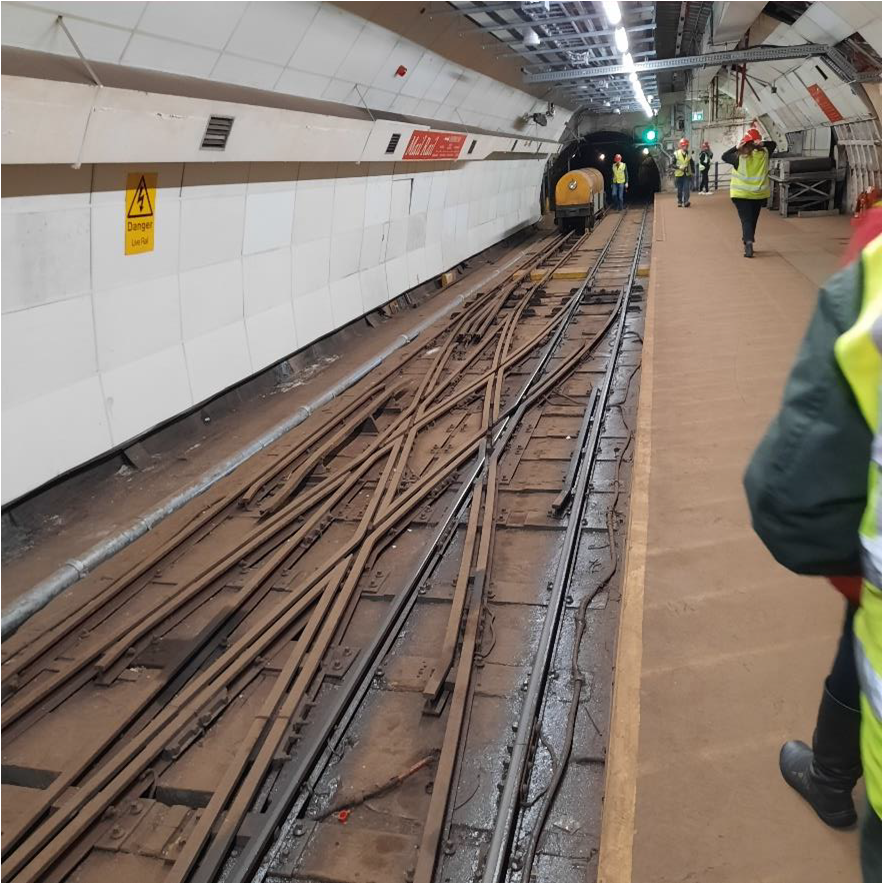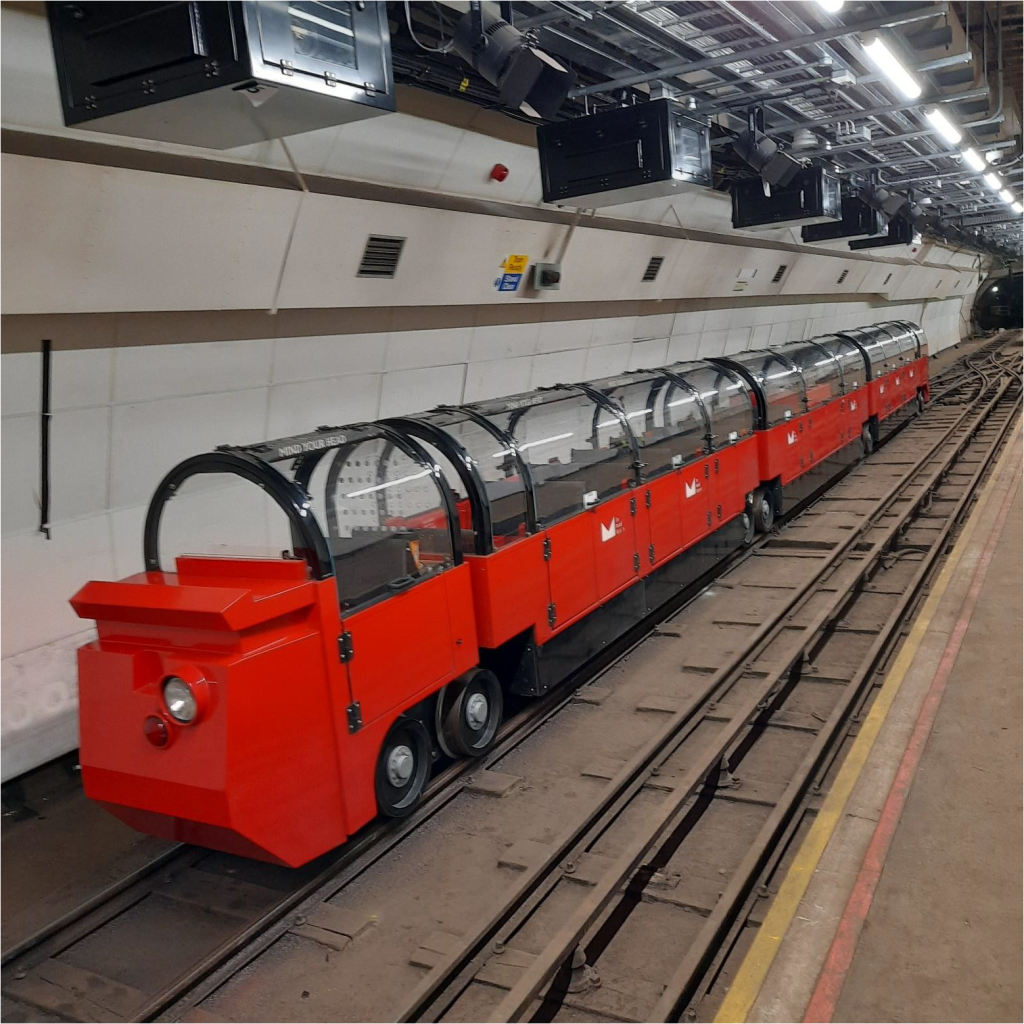
No. 626 May 2023 Edited by Jim Nelhams
_____________________________________________________________________________________________________________________________
HADAS DIARY – Forthcoming Lectures and Events
We are delighted that lectures are now face-to-face. Lectures in winter may be on Zoom. Lectures are held in the Drawing Room, Avenue House, 17 East End Road, Finchley N3 3QE. 7.45 for 8pm. Tea/Coffee/biscuits available for purchase after each talk. (Cash please)
Buses 143, 125, 326 and 460 pass close by, and it is a five to ten-minute walk from Finchley Central Station on the Barnet Branch of the Northern Line. Bus 382 also passes close to Finchley Central Station.
Tuesday 9th May 2023 Bill Bass – Hopscotch in High Barnet: a HADAS dig.
Several of us worked on this short but enjoyable ‘backyard’ dig last year, directed by Bill, and the report is being serialised in the newsletter.
Tuesday 13th June 2023 HADAS Annual General Meeting
Followed by a lecture to be arranged.
Saturday 16th September Proposed HADAS “Open Day” at Avenue House
More information to follow.
Subscriptions by Cheque
The annual subscription was due on the 1/4/2023. Members who pay by cheque and have not yet sent their cheque, please address it to:
HADAS
C/o Avenue House, 17 East End Road, Finchley. London N3 3QE
If you have sent your cheque to Steve Brunning’s old address please let us know.
HADAS Attendance at Lectures Jo Nelhams
The members returned to face-to-face lectures on February 14th 2023: the previous one we had was on 10th March 2020. After nearly three years there were some very “happy to be back” faces especially those unable to link by Zoom.
We had 21 members plus one visitor. In the absence of the Chairman and other officers, our Vice Chairman, Peter Pickering, introduced the speaker, Signe Hoffos who presented a very interesting talk about Bombed Churches in the City.
The lecture in March by Robin Densem was attended by 23 members, an increase of 2 on the previous month, and 4 visitors, a total of 27, a very amusing presentation entitled “A Career in Ruins”.
1
Although the April lecture was immediately after Easter Monday, the number of members attending rose to 25 plus 1 visitor, a total of 26. It has been encouraging to see the number of attendees increasing each month. Not all are able to come each month, but so far 30 different members have returned.
Thanks to Bill Bass who led the way with organising the speakers for lectures since the return of meetings.
April lecture Jim Nelhams
The topic for the April lecture delivered by Robert Stephenson was “The Thames, its Myths and Mysteries.
The lecture embodied lots of information about the river.
The river was a source of prosperity to London and helped communications. Its original course was further to the north, but it had been pushed south by the ice sheet in the last ice age. The location of the city was the first place where the river could be crossed with a bridge. The route was quite marshy with lots of islands. The suffix “sea” means an island as in Chelsea and Battersea. Thorney Island, where Westminster Abbey and the Parliament were built, was formed by the dividing of the Tyburn River.
Robert guided us through various historical happenings and archaeological finds.
Although most swans on the river belong to the Crown, the Vintners and the Dyers Livery Companies have some rites, and marked their ownership with nicks to the beaks, one nick for the Dyers and two for the Vintners. These days, the birds are ringed.
Ownership of the river also rested with the Crown until 1350 when the stretch from Southend to Staines was sold to the City of London to raise funds for the crusades. The current owner is the Thames Water Authority.
The river is 215 miles long, the longest in England, draining over 5,000 square miles and dropping 360 feet. It flows through 9 counties at a maximum speed of 9 knots. The maximum tide is 25 feet with an average of 19 feet.
In 1952, Lord Noel-Buxton, a 6’ 3” tall peer, attempted to wade across the Thames close to Westminster Bridge to retrace the path used by Roman Legions. He managed to cross half-way but had forgotten that a deep channel had been dredged in the middle, so he had to swim the rest of the way.
The Hendon Beverley Robert Michel
As a tail-piece to Andy’s excellent article on the Beverley (Newsletter 625), the following came to mind:
Another Hendon connection for the much-lamented XH124 was that it bore a small high-vis orange-coloured plastic ‘zap’ on its nose. This zap was sort of in the shape of a bird, meant to be a falcon at rest, being the centrepiece of the badge of the RAF’s 120 Squadron. The equally lamented RAF Station Hendon was for some time the home of 120 (Hendon) Squadron Air Training Corps, of which I had the (probably) dubious honour of being its longest serving cadet corporal. Anyway it was cadets from this squadron, which last I heard resided in Burnt Oak, who were responsible for affixing the zap to said Beverley – no mean feat given the height of the nose section from the ground. This act took place under cover of darkness sometime in the early-mid 1970s and is not one I have any memory of taking part in……….
NB – ‘Zap’ was (is?) the name given to bits of sticky-back plastic crafted into the shape of emblems of armed service units. Affixing these to all manner of prominent surfaces was all the rage during the 1970s-80s and may still be for all I know.
2
Alan Godfrey’s reprint Old Ordnance Survey maps Pamela Taylor
Many HADAS readers will be devotees of Alan’s maps, but for those who haven’t yet discovered them, each one comes as a nifty sheet, folded in the traditional way, with the map on one side and the other
shared between a history (brief when the series started, now up to four panels, some 3,200 words) and either some matching directory pages or, less frequently, part of another map.
Alan started the series in 1981, concentrating on the OS’s 25″ maps in the first three editions, which in most of SE England means one each in the 1860s, 1890s and early 1900s. Since then, he’s also
embarked on the fourth edition, surveyed in the 1930s and the last before the OS changed the sheet lines, and has also made forays into the 1″ and 5′ scales and, thanks to some War Office sources, the
Ruhrgebiet and D-Day landing beaches.
In the early decades Alan was busy scouring record offices and libraries for clean originals that could be transported to Gateshead where they were photographed on a camera the size of a fully-extended MRI scanner. Barnet Local Studies was one of his early discoveries and the borough librarian, David Ruddom, was very happy for his two borough archivists, Joanna Corden and me, to lend the maps and write accompanying notes, and for the libraries to sell the results. Today high-grade scans and the internet mean that Alan usually relies on scans from a single copyright library, much simpler but some of the fun’s been lost.
I left Barnet in 1999 but the link with Alan continued and I’ve now written some 200 sets of notes, mostly for places in and around London but with outliers ranging from Castle Douglas through Louth and Cambridge down to Winchester and Romsey. Both in new places and in those I thought I knew, the maps often provide real historical excitement. I’m by preference a medievalist and some boundaries on a Mortlake map kick-started an article in Anglo-Norman Studies. Better still, boundaries in Kensington Gardens delivered an Alice down a rabbit hole moment and, eventually, a book, Knightsbridge and Hyde (VCH Publication, 2017) which overturned all previous understandings of Knightsbridge.
Closer to home, Alan’s recently sent me to Enfield, Edmonton, Wembley, Kingsbury and also back to Hendon and Golders Green, but this time in the 1936 survey and therefore in massive contrast with the earlier editions. At this rate, though, he won’t be doing any more NW Middlesex maps because the sales are poor. As a matter of pride as well as self-interest would HADAS readers care to help reverse the trend? Roger Chapman explained in this Newsletter how the National Library of Scotland has put its OS maps freely online, and it’s a wonderful resource, but with Alan’s you can look at several side by side (boundaries are good, map edges less so) and the map notes, which also usually list the main sources, are a major bonus.
There’s a very easy website: www.alangodfreymaps.co.uk. The maps are cheap and there are often additional offers. Happy hunting.
Mail Rail Jim Nelhams
As a member of the Letter Box Study Group, I visited the Postal Museum at Mount Pleasant before it moved to expanded premises on the other side of the road although it still has the original space at the back of the Mail Centre, consisting of a shop and the current access to Mail Rail. The main building specialises in postage history.
3
Before World War 1, the Post Office planned to build its own underground railway to transport mail between eight postal sorting offices on the north side of the Thames. Approval was given by the Post Office (London) Railway Act, 1913 and work started in 1914. One of the project’s chief engineers was Harley Hugh Dalrymple-Hay who had been involved in the design of the Bakerloo and Northern Lines.
The tunnels were all dug by hand. Following the outbreak of the war, resources became limited and work was suspended in 1917. At one time, water from the River Fleet broke into the tunnel at Mount Pleasant but this was rapidly staunched. As Mount Pleasant is the least deep of the stations, flood doors were installed to isolate any flooding and protect the whole system.
During WW1, the completed tunnels were used to store valuable items from The British Museum, National Portrait Gallery and the Royal Academy.
Work resumed in 1924 and after fitting out and testing, the service commenced in 1927. From that date, trains ran every day, except one when a bomb hit Mount Pleasant during WW2, until 2003 when rising costs caused the service to stop.
The line runs for six and a half miles from Paddington in the west to Whitechapel in the east joining together eight major sorting offices. The total track length was 22 miles. When the service commenced, this journey took two hours by road: by rail, it could be completed in 35 minutes with a maximum speed around 30 mph.

Trains were unmanned, running on a 24” gauge with electric power from a third rail system. They could travel at up to 35 miles per hour and ran to a strict timetable every four minutes for 22 hours per day, carrying 4 million items of post each day.
When the Postal Museum expanded, work was done to open a section of the railway for passenger rides and were granted right of access by Royal Mail.
Jo and I were fortunate enough through the auspices of Subterranea Britannica to join a special group visit to Mail Rail. This included a trip on the railway – some 15 minutes long around the Mount Pleasant Loop.
Trains are now battery driven. There were some audio-visual displays during the trip. The group also took a conducted walk of about a mile through parts of the system – a service not generally available. Most of the system is still owned by Royal Mail and not generally accessible.
4
During the tour, we saw the railway graveyard where old rolling stock is now stored. There is no easy way to remove old trains to the surface.


Far right is a conveyor belt which would have carried sacks to the main sorting office above.
The workers had less than four minutes to unload each train to preserve the timetable.
5

The Postal Museum is open each week from Wednesday to Sunday between 10am and 5 pm. Tickets include free entry for a year and one ride on Mail Rail on the day of your first visit. Current cost is £16 if booked online.
We are happy to organise a bus-pass outing for members if there is sufficient interest. Please email jim_nelhams@hotmail.com or call 020 8449 7076 to let us know.
6
Other Societies’ Events Eric Morgan
Not all societies or organisations have returned to pre-covid conditions. Please check with them before planning to attend.
Update
Thursday 18th May, 7p.m. London Archaeologist. Please note the venue has now changed to L.S.E., Room 1.09, Marshall Building, Portugal Street, WC2A 2HD. But spaces are limited. Or you can attend on zoom. Please book your free place for either via www.londonarchaeologist.org.uk. as shown in April newsletter.
New Events
Sunday 4th June, 2.30p.m. Heath and Hampstead Society. From Parliament Hill to Highgate; History and Landmarks. Meet at Bandstand, Parliament Fields (off Gordon House Rd. Gospel Oak, NW5). Walk led by Jeska Harrington-Gould. Lasts approx. 2hrs. Donation £5. Please contact Thomas Radice on 07941 528034 or e-mail hhs.walks@gmail.com or visit www.HeathandHampstead.org.uk.
Wednesday 7th June, 6p.m. Gresham College. How Pagan was Medieval Britain? Talk by Ronald Hutton. Ticket required. Register at www.gresham.ac.uk and view online. Please see How Pagan Was Medieval Britain? | Gresham College – free. Will consider figures in seasonal folk rites, carvings in churches, the records of trials for witchcraft and a continuing veneration of natural such as wells. Will also compare Ancient paganism and Medieval Christianity as successive religious systems.
Saturday 10th and Sunday 11th June, 10.30a.m. – 5p.m. Barnet Medieval Festival. Barnet R.F.C. Ground, end of Byng Road, Barnet, EN5. Lots of stalls including HADAS, Barnet Museum, Barnet Society, and Battlefields Trust. Battle of Barnet re-enactments. Also Battle of St. Albans 1461, re-enactments at midday on both days. Food and drink stalls. For more info. Please visit www.barnetmedievalfestival.org.
Monday 12th June 3p.m. Barnet Museum and Local History Society, St. John the Baptist Church, Chipping Barnet, corner High St./ Wood St., Barnet, EN5 4BW. A window into 1930’s Barnet;Cole collection photographs from glass plates.Talk by Terence Atkins. Please visit www.barnetmuseum.co.uk.
Wednesday 14th June 6p.m. Gresham College. Sir Christopher Wren; Architect and Courtier. Talk by Simon Thurley. Ticket required. Register at www.gresham.ac.uk and view online. Please see Sir Christopher Wren: Architect & Courtier | Gresham College – free. Taking Wren the courtier as it’s starting point, this lecture uses new research to paint his talents and career in a new light.
Wednesday 14th June, 8p.m. Hornsey Historical Society. Talk on zoom. Aspects of Pre-historic Britain; the first people by Graham Harrison. Please e-mail hornseyhistoricalchairman@gmail.com.for link. Also visit www.hornseyhistorical.org.uk.
Sunday 18th June, 12-6p.m. East Finchley Festival. Cherry Tree Wood, East Finchley, N2. (Entrance off High Road opposite Tube Station). Lots of stalls including Finchley Society, Friends of Cherry Tree Wood (with Roger Chapman of HADAS and North London U3A). Also craft, food and beer stalls. Music stage.
Wednesday 28th June, 7.45p.m. Friern Barnet and District Local History Society. North Middx. Golf Club, The Manor House, Friern Barnet Lane, N20 0NL. R.A.F. Museum. Talk by David Keen. Please visit www.friernbarnethistory.org.uk and click on programme, or phone 0208 368 8314 for up-to-date details (David Berguer,Chair). Non-members £2. Bar available.
7
Thursday 29th June, 7.30p.m. Finchley Society. Drawing Room, Avenue (Stephens’ House, 17, East End Road, Finchley, N3 3QE. Annual General Meeting. For further details. please visit www.finchleysociety.org.uk. Non-members £2 at the door. Refreshments in interval.
++++++++++++++++++++++++++++++++++++++++++++++++++++++++++++++++
With many thanks to this month’s other contributors: Robert Michel, Eric Morgan, Jim Nelhams, Jo Nelhams, Pamela Taylor
++++++++++++++++++++++++++++++++++++++++++++++++++++++++++++++++
Hendon and District Archaeological Society
Chairman Don Cooper, 59, Potters Road, Barnet EN5 5HS (020 8440 4350)
e-mail: chairman@hadas.org.uk
Hon. Secretary Janet Mortimer, 34, Cloister Road, Childs Hill, London NW2 2NP
(07449 978121) e-mail: secretary@hadas.org.uk
Hon. Treasurer Roger Chapman, 50, Summerlee Ave, London N2 9QP
(07855 304488) e-mail: treasurer@hadas.org.uk
Membership Secretary Vacancy
While we have no Membership Secretary
for the present, please address any correspondence such as change of member addresses or other miscellaneous correspondence to:
HADAS, c/o Avenue House, 17 East End Road, Finchley, London N3 3QE
Website at: www.hadas.org.uk – join the HADAS email discussion group via the website.
8

